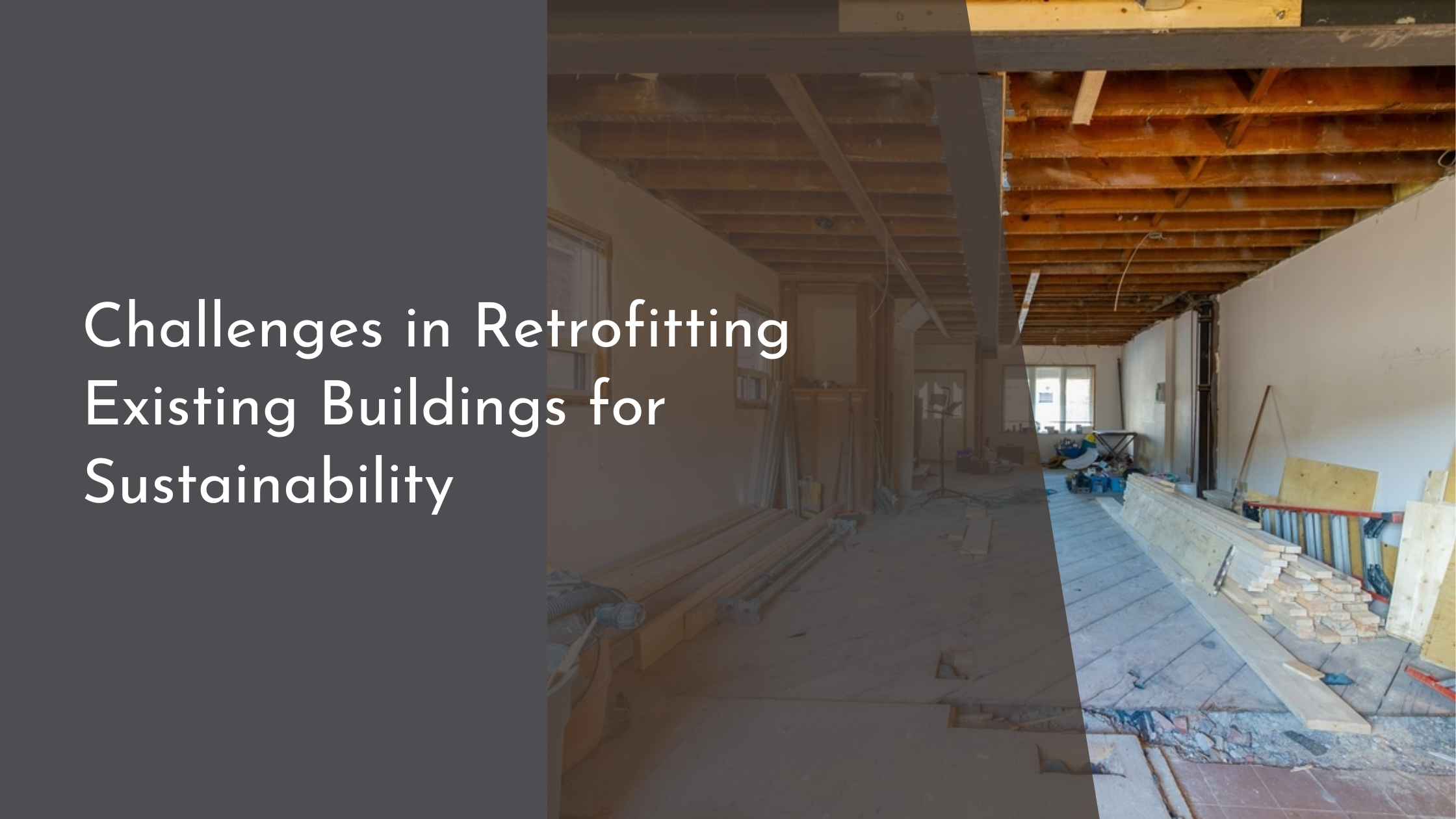Challenges in Retrofitting Existing Buildings for Sustainability
The push for sustainability has propelled a global shift towards greener living, with an emphasis on minimizing our environmental footprint. As new constructions incorporate sustainable practices from the ground up, the challenge of retrofitting existing buildings to meet these standards has become a pivotal focus. Retrofitting not only boosts energy efficiency but also extends the lifespan of buildings, making them more economically viable over time. However, the path to sustainable retrofits is not without its hurdles; a blend of challenges and innovations define this transformative journey.
Understanding the Need for Sustainable Retrofits
The built environment is a significant contributor to global carbon emissions, and retrofitting existing structures presents a powerful opportunity to curb this impact. Older buildings, often constructed without a focus on energy efficiency, contribute disproportionately to energy consumption and greenhouse gas emissions. Sustainable retrofitting seeks to address these inefficiencies by integrating modern technologies and design strategies that reduce energy use and enhance the building’s overall performance. This is not only beneficial for the environment but also offers economic advantages by lowering operational costs and increasing property value.
Alongside environmental and economic incentives, sustainable retrofits have social implications that amplify their importance. By improving indoor air quality and thermal comfort, retrofits enhance the health and well-being of occupants. Furthermore, the adaptability of retrofitting solutions allows for the preservation of cultural heritage and architectural uniqueness, ensuring that cherished landmarks can continue to serve communities while embracing modern environmental standards. The need for sustainable retrofits is thus multi-faceted, addressing ecological, economic, and social dimensions.
Identifying Key Challenges in Retrofitting
One major challenge in retrofitting existing buildings is the integration of new technologies within outdated structures. Many older buildings were not designed with future-proofing in mind, leading to structural limitations that complicate the implementation of modern energy-efficient systems. Additionally, the variability in building designs and materials requires tailored solutions rather than one-size-fits-all approaches, which can increase project complexity and cost.
Financial constraints also pose a significant barrier to retrofitting efforts. While the long-term savings from increased energy efficiency are compelling, the upfront costs of implementing sustainable technologies can deter building owners and investors. Navigating funding options, tax incentives, and grants can be overwhelming, and the short-term financial outlook often overshadows the potential long-term benefits. Moreover, regulatory frameworks and building codes may not always align with sustainable goals, creating administrative hurdles that can delay or hinder retrofit projects.
Innovative Solutions to Overcome Hurdles
Technological advancements offer promising solutions to the challenges of retrofitting. The development of smart building technologies, such as energy management systems and IoT-integrated devices, allows for more efficient monitoring and control of energy use. Such innovations can be seamlessly integrated into existing infrastructures, providing incremental improvements without the need for extensive structural overhauls. Additionally, modular and prefabricated retrofitting components offer a cost-effective and less invasive alternative to traditional renovation methods.
Financial innovations are also emerging to support sustainable retrofitting. Green financing options, such as energy performance contracts and property assessed clean energy (PACE) financing, provide capital that is repaid through the energy savings achieved. These mechanisms reduce the financial burden on property owners and incentivize wider adoption of sustainable practices. Furthermore, collaborative efforts between governments, private sectors, and communities are fostering a supportive ecosystem for retrofitting initiatives, ensuring that both policy and practice are aligned towards sustainability goals.
Concluding Thoughts on a Greener Future
Retrofitting existing buildings for sustainability presents a unique set of opportunities and challenges but holds tremendous potential for reducing the built environment’s carbon footprint. By addressing these challenges with innovative solutions and supportive policies, the retrofit industry can play a pivotal role in the transition to a greener future. Embracing sustainability in existing structures is not only a necessity for mitigating climate change but also a pathway to enhancing the resilience and livability of our urban landscapes.
As we look towards a future that prioritizes sustainability, the retrofitting of existing buildings emerges as a crucial component of this vision. While challenges persist, the combination of technological innovation, financial incentives, and a collaborative approach presents a viable pathway to achieving widespread sustainable retrofits. With concerted efforts, we can ensure that the built environment contributes to a healthier planet, preserving our resources and heritage for future generations. The journey to a sustainable future is underway, and retrofitting existing buildings is a significant step forward in this global endeavor.

